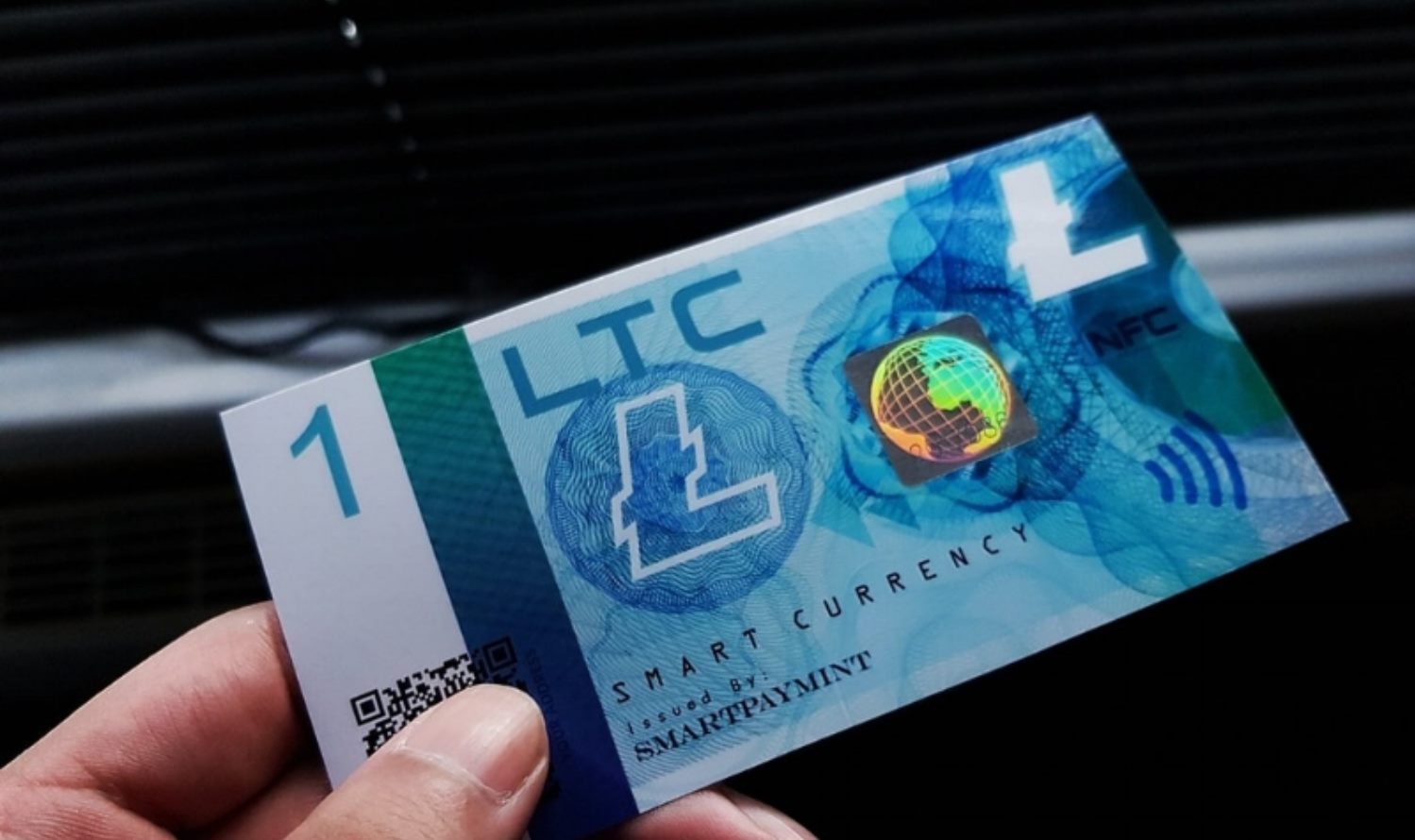Introduction
Welcome to the world of blockchain technology – a revolutionary innovation that is transforming industries across the globe. In this digital era, blockchain has emerged as a game-changer, offering secure and transparent decentralized systems that have the potential to reshape various sectors such as finance, supply chain, healthcare, and more. As blockchain continues to gain momentum, one crucial element that plays a key role in its adoption and implementation is the white paper.
A white paper is a comprehensive document that outlines the concept, technology, and roadmap of a particular project or idea. It serves as a detailed guide, providing readers with a deep understanding of the problem being addressed, the proposed solution, and the potential impact of the project. In the realm of blockchain, white papers have become an essential tool for project teams to communicate their vision and attract investors, stakeholders, and potential users.
The significance of white papers in the blockchain space cannot be overstated. These documents serve as a starting point for investors and enthusiasts to evaluate the viability and potential of a project. By presenting a detailed and well-written white paper, a project team can showcase their knowledge, expertise, and vision, gaining trust and credibility in the process.
In the following sections, we will delve deeper into the key components of a white paper, why they are crucial in blockchain projects, and how to evaluate their effectiveness. We will also explore examples of successful white papers that have played a pivotal role in the success of notable blockchain initiatives. So, whether you are an investor looking for promising blockchain projects or a blockchain enthusiast seeking to understand the technology better, this article will provide valuable insights into the world of white papers in the blockchain ecosystem.
Understanding Blockchain Technology
Before diving into the role and importance of white papers in the blockchain space, it is crucial to have a solid understanding of blockchain technology itself. At its core, blockchain is a decentralized digital ledger that records transactions across multiple computers or nodes. It eliminates the need for intermediaries, such as banks or governments, by enabling direct peer-to-peer transactions in a trustless environment.
One of the key features of blockchain is its immutability. Once a transaction is recorded on the blockchain, it is nearly impossible to alter or tamper with the information. This property ensures the integrity and security of the data stored on the blockchain, making it an ideal solution for industries that require transparent and tamper-proof records, such as finance, supply chain management, and healthcare.
Blockchain operates on a consensus mechanism, where all participants or nodes in the network must agree on the validity of transactions before they are added to the ledger. This consensus mechanism, typically achieved through mining or validation algorithms, ensures the accuracy and consistency of the blockchain.
Another important aspect of blockchain technology is its decentralization. Unlike traditional centralized systems, where a single entity controls the data and operations, blockchain distributes the control and ownership among the network participants. This decentralization enhances security, resilience, and trust in the system, as there is no single point of failure or vulnerability.
Blockchain technology has the potential to solve a wide range of challenges across various industries. Its applications extend beyond just cryptocurrencies like Bitcoin, including smart contracts, supply chain management, identity verification, healthcare records, voting systems, and more. By leveraging the power of blockchain, organizations can streamline processes, reduce costs, increase transparency, and foster trust.
In summary, blockchain technology offers a decentralized, transparent, and secure platform for conducting transactions and storing data. Its immutability, consensus mechanism, and decentralization make it an attractive solution for industries seeking to overcome trust and security issues. Understanding the fundamentals of blockchain is vital to appreciate the significance of white papers, which we will explore in the subsequent sections.
What Is a White Paper?
In the context of blockchain technology, a white paper is a detailed and comprehensive document that outlines a particular project, concept, or idea. It provides in-depth information about the problem being addressed, the proposed solution, the technological architecture, and the implementation roadmap. A well-crafted white paper serves as a roadmap for the project and helps stakeholders understand the vision, benefits, and potential risks involved.
White papers are typically authored by the project team or founders and are intended to educate, inform, and engage the target audience, which includes potential investors, users, partners, and industry experts. They are a critical tool for project teams to gain credibility, attract funding, and build a solid community around their initiative.
A white paper goes beyond a basic project overview by providing detailed technical, economic, and market analysis. It demonstrates the team’s expertise, research capabilities, and understanding of the problem domain. Moreover, it lays out a clear roadmap and timeline for the project, outlining the key milestones, development phases, and expected outcomes.
White papers are not limited to technical concepts or blockchain projects; they can also be used in various industries to present new ideas, research findings, or proposals. However, in the context of blockchain, white papers are especially prevalent due to the complex nature of the technology and the need to communicate its benefits and potential use cases.
It is important to note that white papers are not marketing materials or sales pitches. While they may contain elements of promotion and persuasion, their primary purpose is to provide factual information, analysis, and a comprehensive understanding of the project. They should include technical details, system architecture, token economics, and a clear explanation of how the technology solves the problem at hand.
In summary, a white paper in the blockchain space is a detailed, well-researched document that outlines a specific project, concept, or proposal. It provides essential information about the problem, the proposed solution, and the implementation plan. White papers play a crucial role in attracting investors, building trust, and establishing the credibility of blockchain projects.
The Role of White Papers in the Blockchain Space
In the world of blockchain technology, white papers serve a crucial role in communicating the vision, technical details, and potential benefits of a project to various stakeholders. They play a significant role in attracting investors, building trust, and garnering support within the blockchain community. Let’s explore the key roles of white papers in the blockchain space.
1. Communication of Vision: White papers act as a vehicle for project teams to articulate their vision and goals. They provide a comprehensive overview of the problem being addressed and explain how the proposed solution can revolutionize the industry. By clearly communicating the project’s vision, white papers engage and captivate potential investors and collaborators.
2. Technical Details and Architecture: White papers delve deep into the technical aspects of the project, including the underlying technology, data structures, consensus mechanisms, and security protocols. They provide technical experts and developers with crucial information needed to evaluate the feasibility and potential of the project. By conveying the technical details, white papers establish the project’s credibility and showcase the team’s expertise.
3. Market Analysis and Competitive Advantage: White papers often include market analysis to demonstrate the market potential and target audience of the project. They identify the competitors in the field and highlight the project’s unique selling points and competitive advantages. By presenting a well-researched market analysis, white papers help investors and stakeholders understand the market dynamics and the project’s positioning within it.
4. Token Economics: Many blockchain projects involve the issuance of tokens or cryptocurrencies. White papers provide details about the token distribution, economics, and utility within the project ecosystem. They explain how tokens play a vital role in incentivizing the network participants and driving adoption. By elucidating the tokenomics, white papers enable investors to assess the long-term value and potential returns of the project.
5. Community Engagement and Support: White papers act as a catalyst for building a supportive and engaged community around the project. They provide a platform for discussing the project’s ideas and engaging in meaningful dialogue with potential users and investors. By fostering community engagement, white papers create a sense of ownership and collaboration, ensuring long-term project success.
In summary, white papers play a fundamental role in the blockchain space by effectively communicating the project’s vision, technical details, market analysis, and token economics. They facilitate investor trust, attract collaborators, and engage the community. By understanding the role of white papers, stakeholders can evaluate blockchain projects more effectively and make informed investment decisions.
Key Components of a White Paper
A well-crafted white paper in the blockchain space comprises several key components that provide a comprehensive understanding of the project, its technical details, and its potential impact. Let’s explore the essential elements that make up a high-quality white paper.
1. Executive Summary: The executive summary is a concise overview of the project, highlighting its main objectives, key features, and potential benefits. It acts as a hook to capture the reader’s attention and provide a high-level understanding of the project’s value proposition.
2. Problem Statement: This section clearly defines the problem or challenge that the project aims to address. It presents the current limitations or inefficiencies in the industry and outlines why the problem needs to be solved. Providing a compelling problem statement helps readers understand the project’s relevance and the value it brings.
3. Proposed Solution: Here, the white paper outlines the innovative solution that the project offers. It presents the project’s approach, technology, algorithms, or protocols that can effectively address the identified problem. This section should include technical details and explanations in a clear and understandable manner.
4. Technology and Architecture: This component dives deep into the technical aspects of the project, explaining the underlying technology, data structures, consensus mechanisms, and security measures. It provides insights into the project’s infrastructure, scalability, privacy features, and interoperability with other systems. Technical experts and developers scrutinize this section for a thorough evaluation of the project’s feasibility and potential limitations.
5. Tokenomics and Economics: If the project involves the issuance of tokens or cryptocurrencies, this section details the token distribution, functionality, and economic model. It explains the utility of the tokens within the project ecosystem and the incentives for different participants. This component helps investors assess the long-term viability and potential returns of the project.
6. Roadmap and Timeline: The roadmap section outlines the project’s development milestones, including key deliverables, alpha and beta releases, partnerships, and platform launches. It provides a clear timeline for project execution and helps investors gauge the team’s progress and commitment to the project’s success.
7. Team and Advisors: This part introduces the project team, highlighting their expertise, qualifications, and relevant experiences. It also includes the project’s advisors or partners who bring industry knowledge, credibility, and support. Investors and readers assess the team’s capabilities and track record to evaluate its ability to execute the project successfully.
In summary, a comprehensive white paper comprises several key components, including an executive summary, problem statement, proposed solution, technical details, tokenomics, roadmap, and the project team. Each component serves a specific purpose in providing a well-rounded understanding of the project and its potential impact in the blockchain space.
Why White Papers Are Important in Blockchain Projects
White papers play a crucial role in the success and adoption of blockchain projects. They serve as a foundational document that outlines the project’s vision, technical details, market analysis, and token economics. Let’s explore the key reasons why white papers are essential in the world of blockchain.
1. Transparency and Trust: White papers provide transparency by offering in-depth information about the project’s objectives, technology, and implementation plan. They establish trust with potential investors, users, and partners by showcasing the project team’s knowledge, expertise, and commitment to delivering on their promises.
2. Attracting Investors: White papers act as a powerful tool for attracting investors and securing funding for blockchain projects. By presenting a well-researched and comprehensive document, project teams can demonstrate the market potential, address investors’ concerns, and showcase the project’s competitive advantages. White papers allow investors to evaluate the project’s viability and potential returns on investment.
3. Community Building: A strong and engaged community is crucial for the success of any blockchain project. White papers provide a platform for sharing the project’s ideas, engaging in discussions, and building a supportive community around the project. By involving the community in the early stages of the project through the white paper, project teams can foster a sense of ownership and collaboration, leading to a vibrant and active community.
4. Educating the Market: Blockchain technology is still relatively new and complex for many people. White papers serve as educational resources, helping stakeholders and industry professionals understand the technology, its applications, and the potential impact it can have on various industries. By providing clear explanations and technical details, white papers bridge the knowledge gap and raise awareness about the project.
5. Differentiation and Credibility: In a crowded blockchain landscape, white papers help projects stand out by highlighting their unique value proposition and competitive advantages. A well-crafted white paper showcases the project team’s expertise, technical prowess, and understanding of the problem domain. It establishes credibility and differentiates the project from others, increasing its chances of being recognized and gaining support.
6. Project Evaluation and Due Diligence: Investors and industry experts often use white papers to evaluate and conduct due diligence on blockchain projects. By carefully analyzing the white paper’s content, in particular the technical details, market analysis, and roadmap, investors can assess the project’s feasibility, potential risks, and alignment with their investment objectives.
In summary, white papers are essential in blockchain projects as they provide transparency, attract investors, build communities, educate the market, differentiate the project, and facilitate project evaluation. By effectively communicating the project’s vision, technical details, and potential impact, white papers lay the foundation for successful blockchain initiatives.
Examples of Successful White Papers
White papers have played a significant role in the success of numerous blockchain projects. Let’s explore a few examples of successful white papers that have made a lasting impact in the blockchain space.
1. Bitcoin: The original white paper that introduced Bitcoin was authored by Satoshi Nakamoto in 2008. Titled “Bitcoin: A Peer-to-Peer Electronic Cash System,” the white paper laid the foundation for the world’s first decentralized cryptocurrency. It outlined the concept of blockchain, the consensus mechanism, and the potential of a digital currency without the need for intermediaries. The Bitcoin white paper has been widely recognized and has paved the way for the entire blockchain industry.
2. Ethereum: The Ethereum white paper, written by Vitalik Buterin in 2013, presented a groundbreaking blockchain platform capable of executing smart contracts. Titled “Ethereum: A Next-Generation Smart Contract and Decentralized Application Platform,” the white paper introduced the concept of a programmable blockchain that expanded the capabilities of cryptocurrencies beyond simple transactions. It enabled the development of decentralized applications (DApps) and opened up new possibilities for blockchain technology.
3. Filecoin: The Filecoin white paper, authored by Juan Benet in 2017, proposed a decentralized platform for file storage and retrieval based on blockchain technology. It outlined a storage marketplace that incentivizes individuals to rent out their unused storage space, creating a distributed and secure storage network. The Filecoin white paper attracted significant attention and funding, raising over $257 million in its initial coin offering (ICO).
4. VeChain: VeChain, a blockchain platform focused on supply chain management and product authenticity, released a white paper titled “Creating Valuable Transactions on a Global Scale.” The white paper provided insights into VeChain’s dual-token system, the VeChainThor blockchain, and its unique consensus algorithm. VeChain’s white paper effectively communicated the project’s vision and technical details, leading to partnerships with prominent companies and widespread adoption in industries like luxury goods and pharmaceuticals.
5. Cardano: The Cardano white paper, written by Charles Hoskinson, Jeremy Wood, and others, presented a blockchain platform designed for sustainability, scalability, and interoperability. Titled “Ethereum Classic: A Future of Smart Contracts and Stable Growth,” the white paper introduced Cardano’s unique layered architecture and approach to building a peer-reviewed blockchain platform. Cardano’s white paper demonstrated a commitment to scientific rigor and has since become one of the leading blockchain platforms in the industry.
These examples highlight the importance of well-crafted white papers in the success of blockchain projects. From Bitcoin to Ethereum, Filecoin, VeChain, and Cardano, these white papers effectively conveyed their vision, technical innovations, and potential impact, leading to widespread adoption, collaborations, and investor support.
How to Evaluate a White Paper
When considering investing in a blockchain project, evaluating the white paper is an essential step to assess the project’s viability and potential for success. Here are some key factors to consider when evaluating a white paper.
1. Problem and Solution: Start by examining the problem the project aims to solve. Is it a real and pressing problem within the industry? Is their proposed solution unique and innovative? Assess whether the project addresses a legitimate need and if their solution is convincing and feasible.
2. Technical Details: Dive into the technical aspects of the white paper. Evaluate the project’s technology, algorithms, consensus mechanism, and security measures. Consider the scalability, interoperability, and privacy features it offers. Assess if the technical details are well-explained, coherent, and demonstrate a deep understanding of blockchain technology.
3. Tokenomics and Economics: Analyze the tokenomics and economic model presented in the white paper. Understand the purpose of the token, its utility within the ecosystem, and the token distribution. Evaluate if the economic model makes sense and if there are clear incentives for different stakeholders to participate in the network.
4. Market Analysis and Competition: Study the market analysis provided in the white paper. Assess the project’s target market, its competitive landscape, and its potential for disruption. Look for evidence of thorough research and a clear understanding of the industry dynamics.
5. Roadmap and Milestones: Evaluate the project’s roadmap and milestones outlined in the white paper. Assess if the roadmap is realistic, achievable, and shows a clear progression of development stages. Look for timelines and milestones that demonstrate the team’s ability to execute and deliver on their promises.
6. Team and Advisors: Assess the project team’s qualifications, expertise, and experience. Research their backgrounds to determine if they have the necessary skills to execute the project successfully. Evaluate the credibility and relevance of the project’s advisors or partners, as their involvement can enhance the project’s chances of success.
7. Community and Communication: Evaluate the project’s community engagement and communication efforts. Assess if the team actively interacts with the community, responds to inquiries, and provides regular updates. A strong and engaged community is crucial for the long-term success and adoption of a blockchain project.
8. Red Flags and Risks: Look out for any red flags or warning signs that may indicate potential issues or risks. Be cautious of unrealistic promises, lack of detail, plagiarized content, or overemphasis on the token sale without providing sufficient substance about the project itself. Conduct thorough due diligence to assess any potential risks associated with the project.
By carefully evaluating these factors, you can make an informed decision about the viability and potential of a blockchain project. A well-designed and comprehensive white paper, backed by a strong team and a compelling solution, increases the likelihood of success.
Conclusion
In the rapidly evolving world of blockchain technology, white papers hold immense significance. They serve as a powerful communication tool, enabling project teams to articulate their vision, outline technical details, attract investors, build communities, and create a roadmap for success. Evaluating white papers is essential for making informed investment decisions and assessing the potential of a blockchain project.
A well-crafted white paper encompasses key components such as problem statements, proposed solutions, technical details, token economics, and a roadmap. It provides transparency, establishes credibility, and fosters trust among investors, users, and stakeholders. Moreover, successful white papers have played a pivotal role in the industry, with examples like Bitcoin, Ethereum, and Filecoin paving the way for groundbreaking blockchain developments.
When evaluating a white paper, it is essential to assess the problem being addressed, the proposed solution’s feasibility, and the team’s technical expertise. Additionally, analyzing market analysis, the project’s roadmap, and the tokenomics can provide insights into a project’s potential for success. Furthermore, considering the team’s qualifications, community engagement, and potential risks can help in making well-informed decisions.
As blockchain technology continues to disrupt industries and transform the way we conduct transactions, understanding the role and importance of white papers is crucial. Whether you are an investor looking for promising projects, a developer seeking groundbreaking technologies, or a community member interested in understanding the intricacies of blockchain, white papers serve as a vital resource.
In conclusion, white papers are the backbone of blockchain projects, serving as comprehensive documents that outline their vision, technical details, market analysis, and token economics. By evaluating white papers effectively, we can navigate the blockchain landscape and support projects that have the potential to drive innovation, foster trust, and transform industries for the better.

























